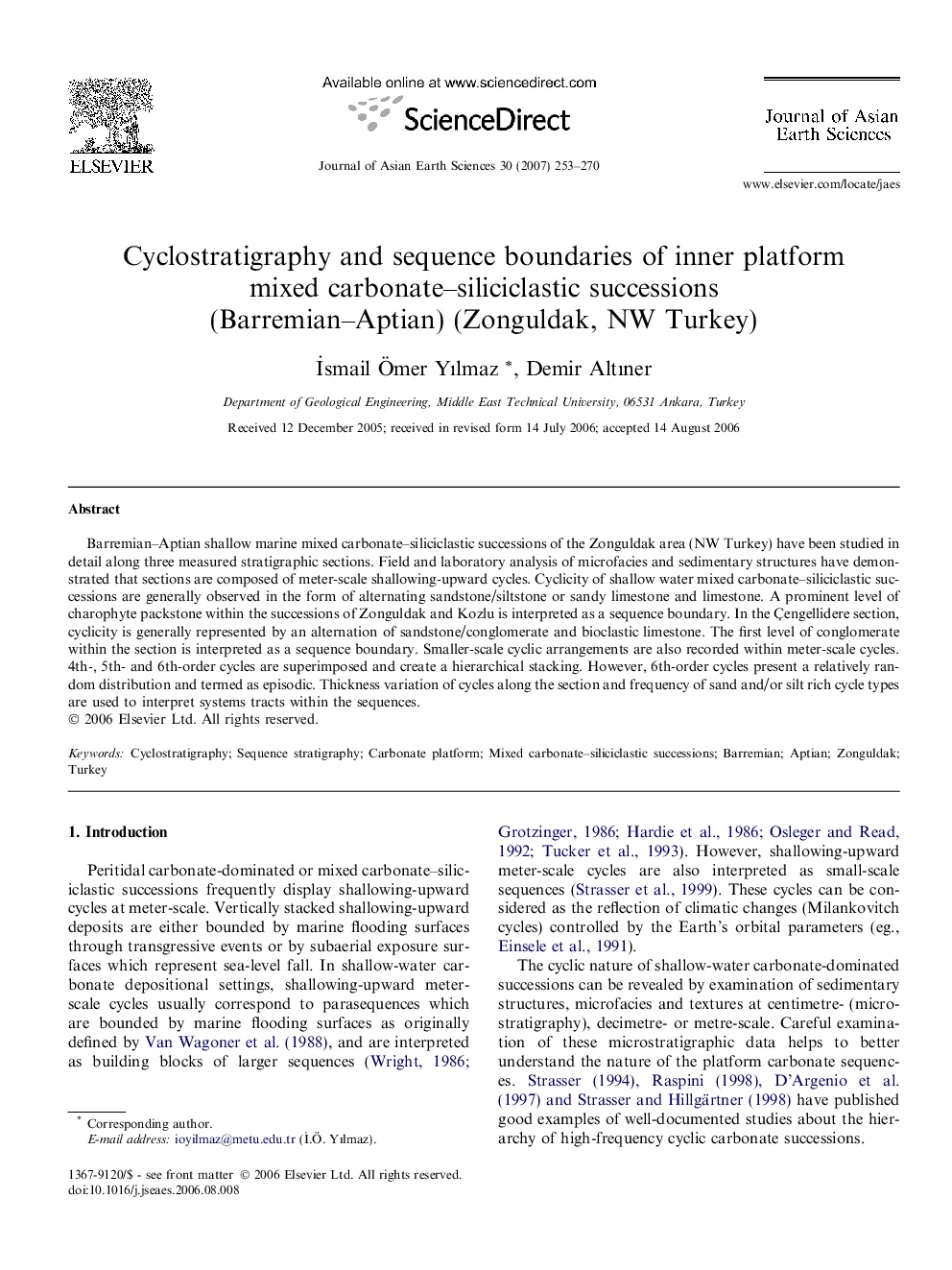| Article ID | Journal | Published Year | Pages | File Type |
|---|---|---|---|---|
| 4732291 | Journal of Asian Earth Sciences | 2007 | 18 Pages |
Barremian–Aptian shallow marine mixed carbonate–siliciclastic successions of the Zonguldak area (NW Turkey) have been studied in detail along three measured stratigraphic sections. Field and laboratory analysis of microfacies and sedimentary structures have demonstrated that sections are composed of meter-scale shallowing-upward cycles. Cyclicity of shallow water mixed carbonate–siliciclastic successions are generally observed in the form of alternating sandstone/siltstone or sandy limestone and limestone. A prominent level of charophyte packstone within the successions of Zonguldak and Kozlu is interpreted as a sequence boundary. In the Çengellidere section, cyclicity is generally represented by an alternation of sandstone/conglomerate and bioclastic limestone. The first level of conglomerate within the section is interpreted as a sequence boundary. Smaller-scale cyclic arrangements are also recorded within meter-scale cycles. 4th-, 5th- and 6th-order cycles are superimposed and create a hierarchical stacking. However, 6th-order cycles present a relatively random distribution and termed as episodic. Thickness variation of cycles along the section and frequency of sand and/or silt rich cycle types are used to interpret systems tracts within the sequences.
